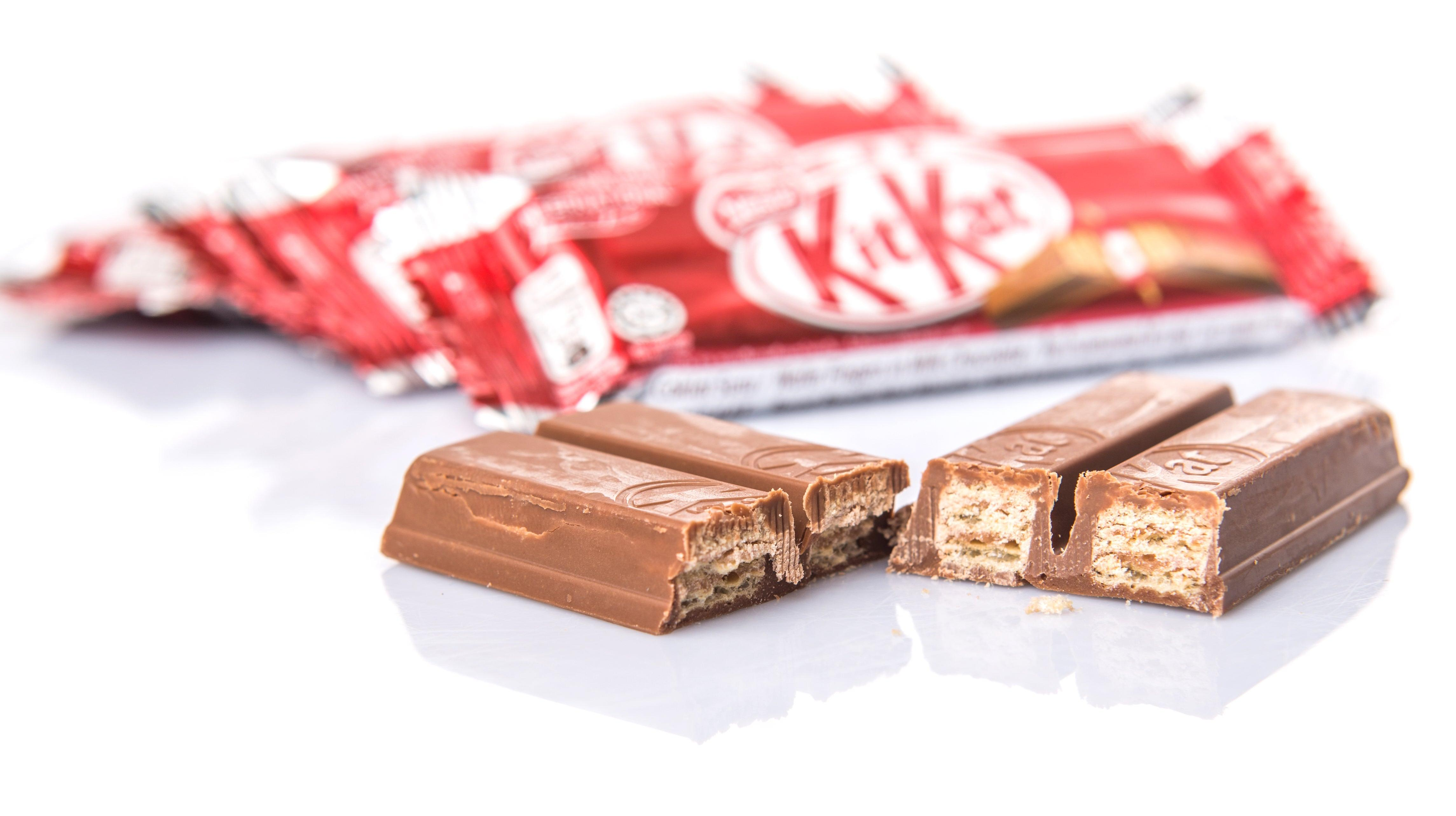Kit Kat Filling, The Candy Industry's Long-Held Secret
It only took Nestlé 80 years to reveal the secret ingredient inside Kit Kat candy.
When I think of the Kit Kat, I'm usually thinking about the part that snaps—the perforation in the outer chocolate layer where I break me off a piece of that Kit Kat bar. I've never thought much about the crispy wafers inside, or the thin layers of filling pressed between them that give the candy its unique texture. The interior doesn't have much of a flavor on its own; you pretty much just taste chocolate all the way through. So when I learned what Kit Kat filling is made of, everything suddenly made sense.
What’s in the center of a Kit Kat bar?
The New York Post explains that Kit Kat revealed the secret of its filling back in 2015 during an episode of Inside the Factory, a TV show that aired on BBC. During the candy manufacturing process, it was explained, mistakes inevitably happen, some of which result in irregular, malformed, or otherwise funny-looking Kit Kats that can't be packaged up and sold. An employee is tasked with picking out the oddballs.
During the Inside the Factory shoot, the host noticed that the messed-up Kit Kats were being tossed into a large blue bucket. "What happens to all the ones you're throwing away?" they asked.
The employee explained that the damaged Kit Kats go through a process called rework, which means the candy is eventually combined with cocoa liquor and sugar to form the paste that glues the wafer cookies together inside each Kit Kat. Which... holy shit. As a cynical old food writer, I thought I'd lost my sense of wonder, but I'm happy to say it has now returned.
Kit Kat filling is made of broken Kit Kats. That would certainly explain why it doesn't have a distinct flavor; it's chocolate and wafer all the way through.
Joyce Tan, head of marketing for Nestlé Australia's confectionery division, confirmed this fun fact to the media. The imperfect bars are mixed with other ingredients and turned into a praline (the term for a confectionary spread that usually contains nuts, although there's no nuts in Kit Kats). This is what you see thinly spread between those wafers, if you ever stop and look at a Kit Kat's cross-section before devouring it.
American vs. Japanese and European Kit Kats
It should be noted that this "secret" about Kit Kat filling was revealed by Nestlé, the company responsible for making Kit Kats everywhere on earth except the United States. Here, they are produced by Hershey, and the difference between Hershey and Nestlé's products is the reason you see such high demand in the US for coveted Japanese Kit Kat flavors, which have a reputation for being more inventive and complex than American ones.
Is Hershey's Kit Kat filling produced with Kit Kat scraps, like Nestlé's? It's not entirely clear. In 2017, Today reached out to Hershey asking about the filling, to which Hershey replied: "While we make and sell Kit Kat bars in the U.S. under a global license from Nestlé, the manufacturing process for Kit Kat is proprietary under this license."
So... what was the filling in the first Kit Kat ever made?
This raises the question of which came first, the chicken or the egg. What was holding the wafers together inside the very first Kit Kat bar? How many broken Kit Kats are needed to produce a praline with the proper texture?
The spokesperson told Today that the original recipe would not have involved reworked Kit Kats, because of course it wouldn't. Some things remain a mystery.
As a cook who tries to avoid waste, I think "reworked" candy is a culinary act of genius. On a large manufacturing scale, I'm sure that this process saves Nestlé an extraordinary amount of money and minimizes waste efficiently. Plus it gives me a whole new appreciation for what goes inside a Kit Kat, because I'll never look at them the same way again.
